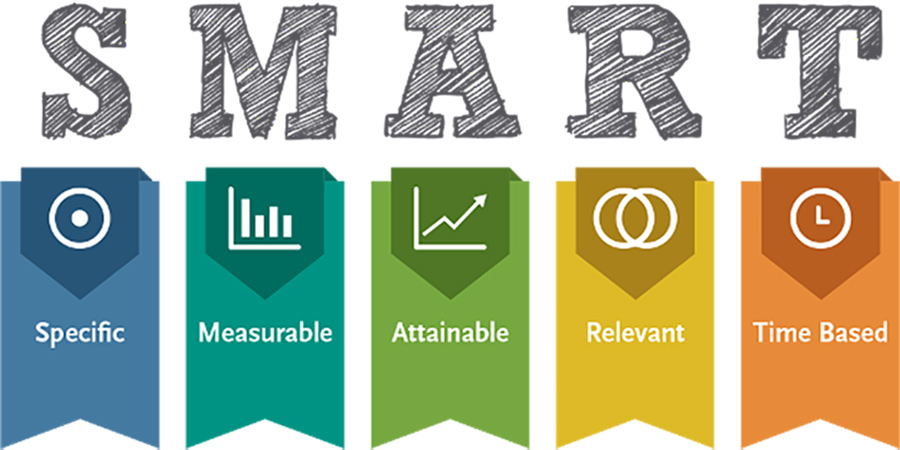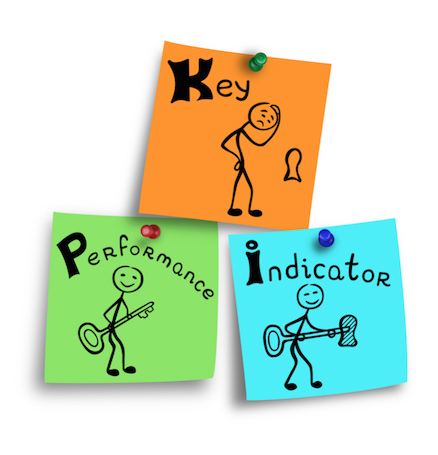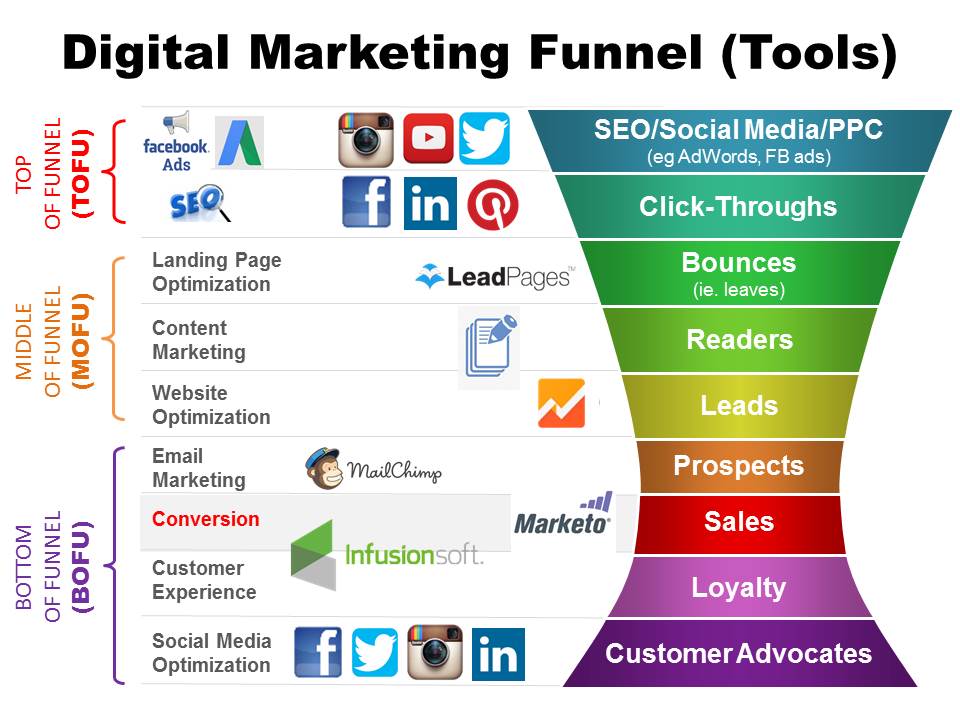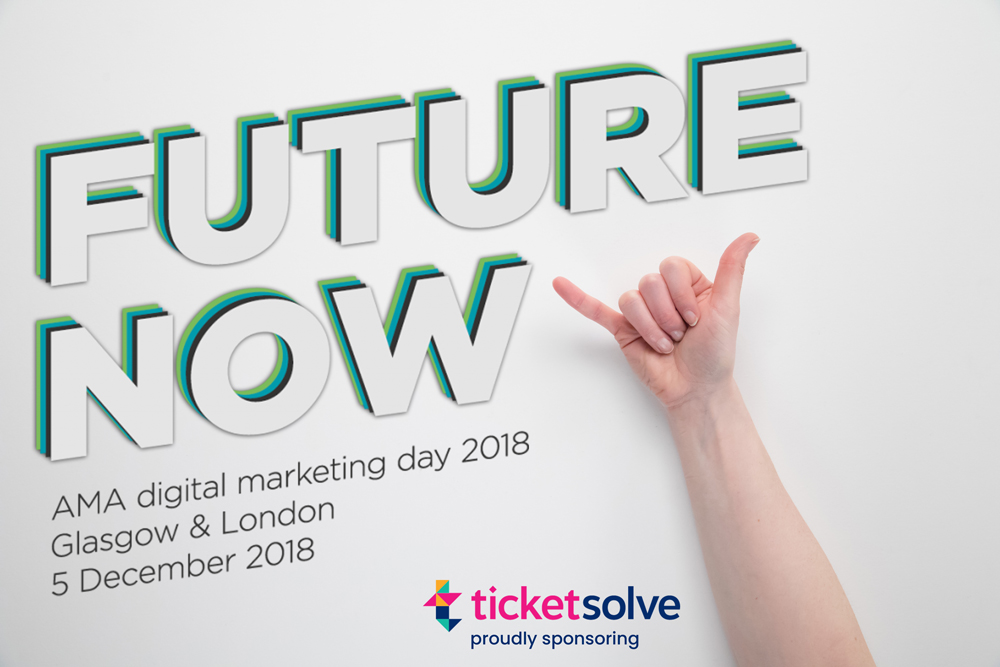Future Now: Data Driven Thinking and Getting ROI From Everything You Do

In a post GDPR world, we’ve got a huge data advantage: if the customer is sharing data with you, it’s because they really want to engage with your organisation. This increased focus on data, gives the opportunity really think hard about how to best use customer data and segmentation in our sales and marketing strategies; and really engage with our customers.
But before we even look at the data, we need to get our strategy and planning house in order.
Data Driven Thinking Starts With Setting Specific, Measurable Goals

Our first stop is going to be clear, definable and measurable objectives for our campaigns - regardless of channel. We’ve talked about SMART goals before, the same thing applies here for your objectives. So for example, instead of, “with this campaign we’d like to see an increase in donations,” a better objective would be, “with this campaign we’d like to see a 15% increase in online donations during the month of December.”
Next stop is how we are going to achieve our goals. Now again, we need to be specific - what channels and tactics are really going to help us hit our objectives? Remember we must be able to measure success! Which tactics you use will largely depend on which customers you are targeting (more on that below), but again define clearly what you expect to achieve from each channel, e.g., of the 15% increase in donations, 5% will come from FB, 5% from Insta and 5% from Twitter.

Next are our KPIs so we can determine which direction our campaigns are going - do they need tweaks, are they on track or should we just call it because it simply is not working? In our case of increasing donations, we may also want to add a few KPIs for engagement on social media or membership sign up as well. This will allow you to better track the customer journey, but also help in the final stop . . .optimising your campaign.
This is really where digital has a huge advantage over traditional marketing tactics. You can adjust and optimise your campaign until you hit the sweet spot. Measuring along the way and analysing your data allows you to really ensure you can hit your targets and goals.
Now you have your goals and campaign in hand . . .let’s take a look at the data you’ve already got and get into how to put a great data driven campaign together.
Segmenting Your Market and Data
We’ve talked a lot about audience segmentation, (here, here and here) and the invaluable role data plays in helping to segment audiences effectively. Segmenting well means that you can really focus on good communication with your customer - making them, not you - the focus. Segmenting your audiences has huge advantages.

Better conversions. Segmenting your market means that your marketing messages will hit the right target at the right time, in turn leading to a bump in sales. We sometimes hear from customers that they really can’t segment their customers. I would argue that there is something - even if it is something small - that sets one audience apart from another. Even that small something can help you better target your campaigns.

ess time, money and marketing effort. Let’s face it, arts organisations really need to make their money, time and effort stretch and work hard. A scattershot approach can (and often does) waste all three of these valuable resources. Taking a targeted, segmented approach to your efforts is far more efficient.

Happier customers. And here is the crux of it. Customers prefer it when you talk to them about things that interest them; they are more inclined to buy if the message feels directed at them and not generic.
The Tools for Data-Driven Decision Making
The fantastic thing is that there are a myriad of tools to help with gathering and analysing the entire customer journey to help you make better marketing decisions. These tools can also help you to identify segments worth going after, or if even if there is a case to not segment at all. Data can help us determine how to segment: demographics, interest groups, proximity to the venue, frequent bookers, first-time bookers, etc. A general best practices rule is that your segments should be measurable, substantial, accessible, differentiable and actionable. Pulling all of this data together gives you the opportunity on a granular level to create and test marketing strategies for very specific audiences.
Data Driven Decisions and ROI in Digital Campaigns
Google Tag Manager and Google Analytics
Ultimately, the goal of any marketing campaign is to get the biggest possible return on your investment. Again, powerful tools such as Google Tag Manager can give you instant feedback (via data) on the success of your campaign. But GTM only gives you data from one aspect. The real strength here is the interplay between Google Analytics and Google Tag Manager. For example, with Tag Manager, you can decipher a form click versus a normal click, and even get special insights such as a ‘hover over’. So if your customer hovers over a particular show, but does not click, you could follow up with them with a special discount or other remarketing campaigns. This is a more advanced use of Tag Manager but can be done through the setup of an audience or goal within Google Analytics. This combination of tools and data allows you to really make educated decisions about your marketing campaigns and how to maximise conversions.
Mailchimp
Another great tool that can help with data-driven decision making is Mailchimp ROI reporting and automation. This has been a game changer for many Ticketsolve customers. Take Hertford Theatre, who set up an automation to target lapsed customers who have bought a ticket in the last 300 days. 8.9% of these customers have re-engaged and 'and more importantly, re-purchased! It was these tools and more importantly the data that these tools provide that has allowed Hertford and others to harness data-driven decision making to increase ROI.
Another Ticketsolve customer has really engaged Facebook as a successful promotional medium, and over a 12-month period, they have seen four times their return on investment. Their success comes down to data-driven decision making, where they have tried and tested several ideas (with varying degrees of results), and changed their marketing strategies as needed. This data-driven mindset and the use of powerful tools such as Google Tag Manager has helped to define their very creative and results-oriented culture. If you want to learn more about how to successfully implement data-driven thinking into your marketing campaigns, check out our Marketing Campaign Playbook - contact us to grab a copy!

Data-Driven Decision Making in Traditional Arts Marketing
Do we really need to send out brochures? Brochure mailers are a standard in the arts industry. Direct mailers certainly have their place amongst certain (well defined) audiences. But brochures have a massive cost from production to mailing - they are not a cheap option for marketing. Often they are also generic, i.e., our whole database of patrons gets a brochure. But maybe we should deeply consider the value of brochures and specifically who should receive them. I personally receive brochures from various organisations when I haven't been in attendance for over five years. Our real-life example of this questioning, came recently when we worked with a Ticketsolve customer. Together, we carried out an A/B experiment on their direct mail brochures. In the end, we were able to save the customer £14,000 on their brochure mail outs. How can we justify such a cost without sufficient ROI?
You can read more about brochure ROI in our post Are Your Brochure's Working For You .

Data Driven Thinking Lets You Move Fast
One of the key advantages of data-driven thinking is the ability for arts organisations to be agile. The arts industry is stretched: for time, money and resources. This is a given and a state of the industry that is not changing any time soon. Given the constraints arts and culture organisations face, a model that allows you to trial strategies, and importantly move away from those strategies if they are not working is a huge advantage. Learning to experiment - and potentially fail - is naturally something we are afraid of. But if we could fail fast, that would give us the room to be agile and move quickly away from strategies and tactics that don’t work to ones that do, increasing our overall ROI. Data is the key ingredient to create this agility.
Data-Driven Thinking: A Real World Example
We can point to a Ticketsolve customer to show you a real-world example of this data-driven mindset in action. Using Ticketsolve's Google Analytics integration, the theatre is able to see and analyse their customers' journey down to a very fine level. This high level of clarity allows them to tweak marketing campaigns and messages to improve their return on investment. Similarly, with Facebook Ads, they are able to thoroughly analyse their data giving them invaluable remarketing information and strategies. Specifically, the Ticketsolve Mailchimp integration allows them to further improve their direct mail campaigns using automation with particular attention to re-engaging lapsed customers. Having such focus on data, also means they have a focus on ROI. Take for example their Facebook Ads which are central to their overall marketing strategy. Using Ticketsolve’s Facebook integration they can establish ROI’s for every single campaign they run, giving them a deeper view into what works and what doesn’t. For example, in the last year they have run 719 campaigns on Facebook with a reach of almost 400,000 people. What is significant, however, is the ROI they got from these campaigns. From the 719 campaigns, they reached a ROI of 338%. One particular campaign saw a ROI of almost 3900%. The proof is in the results: the revenue generated from Facebook campaigns in 2017 alone accounted for almost 10% of their online sales. This really shows how powerful data can be, and the feedback loop that can help to fine-tune marketing campaigns, strategies and tactics.
Data Driven Thinking is Integral to Ticketsolve
Data-driven thinking has always been central to the development and improvement of the Ticketsolve platform. Looking at aggregate customer data has allowed us to really understand the patron buying journey. This understanding helped structure how we refined and redeveloped the Ticketsolve front-end. We looked closely at how patrons navigate sites that use the Ticketsolve platform. These real user experiences, which are recorded on Ticketsolve customer sites, helped to ensure that our redeveloped front end improves on the customers’ buying journey. We are constantly using real user data to improve Ticketsolve’s front and back end, making it more user-friendly.
A final thought. Love it or hate it, data is everywhere - and it really is defining how we interact with customers online and in digital mediums to come. We need to embrace data as a driver to help our own decision making, and ultimately, improve our customer relationships.
And don't forget to sign up for The Future Now AMA Digital Marketing Day (Glasgow and London) on the 5th of December - we'll see you there!

Categories
Recent posts
Archive
- December 2025 (2)
- November 2025 (1)
- October 2025 (3)
- September 2025 (1)
- August 2025 (3)
- July 2025 (3)
- June 2025 (3)
- May 2025 (4)
- April 2025 (5)
- March 2025 (5)
- February 2025 (4)
- January 2025 (4)
- December 2024 (3)
- November 2024 (5)
- October 2024 (4)
- September 2024 (7)
- August 2024 (5)
- July 2024 (3)
- June 2024 (3)
- May 2024 (3)
- April 2024 (3)
- March 2024 (4)
- February 2024 (5)
- January 2024 (3)
- December 2023 (3)
- November 2023 (4)
- October 2023 (4)
- September 2023 (5)
- August 2023 (3)
- July 2023 (4)
- June 2023 (4)
- May 2023 (5)
- April 2023 (4)
- March 2023 (4)
- February 2023 (5)
- January 2023 (4)
- December 2022 (4)
- November 2022 (3)
- October 2022 (4)
- September 2022 (5)
- August 2022 (2)
- July 2022 (4)
- June 2022 (5)
- May 2022 (4)
- April 2022 (5)
- March 2022 (3)
- February 2022 (4)
- January 2022 (4)
- December 2021 (2)
- November 2021 (3)
- October 2021 (5)
- September 2021 (4)
- August 2021 (4)
- July 2021 (3)
- June 2021 (4)
- May 2021 (2)
- April 2021 (4)
- March 2021 (5)
- February 2021 (4)
- January 2021 (5)
- December 2020 (4)
- November 2020 (4)
- October 2020 (5)
- September 2020 (5)
- August 2020 (4)
- July 2020 (7)
- June 2020 (5)
- May 2020 (5)
- April 2020 (5)
- March 2020 (8)
- February 2020 (4)
- January 2020 (5)
- December 2019 (3)
- November 2019 (5)
- October 2019 (4)
- September 2019 (4)
- August 2019 (5)
- July 2019 (4)
- June 2019 (4)
- May 2019 (5)
- April 2019 (4)
- March 2019 (4)
- February 2019 (3)
- January 2019 (5)
- December 2018 (4)
- November 2018 (8)
- October 2018 (2)
- September 2018 (3)
- August 2018 (5)
- July 2018 (4)
- June 2018 (4)
- May 2018 (1)
- April 2018 (1)
- March 2018 (3)
- February 2018 (2)
- December 2017 (2)
- November 2017 (3)
- October 2017 (4)
- September 2017 (2)
- August 2017 (1)
- July 2017 (5)
- June 2017 (3)
- May 2017 (2)
- April 2017 (3)
- March 2017 (2)
- February 2017 (3)
- January 2017 (3)
- December 2016 (4)
- November 2016 (1)
- September 2016 (1)
- July 2016 (3)
- June 2016 (1)
- May 2016 (2)
- April 2016 (2)
- February 2016 (1)
- January 2016 (3)
- December 2015 (2)
- September 2015 (1)
- August 2015 (2)
- July 2015 (1)
- June 2015 (2)
- May 2015 (2)
- April 2015 (5)
- March 2015 (2)
- February 2015 (2)
- January 2015 (4)
- December 2014 (3)
- November 2014 (3)
- October 2014 (2)
- September 2014 (3)
- August 2014 (3)
- July 2014 (3)
- June 2014 (7)
- May 2014 (6)
- April 2014 (3)
- March 2014 (2)
- February 2014 (1)
- January 2014 (3)
- December 2013 (1)
- August 2013 (1)
- June 2013 (1)
- April 2013 (1)
Sign up for regular updates


